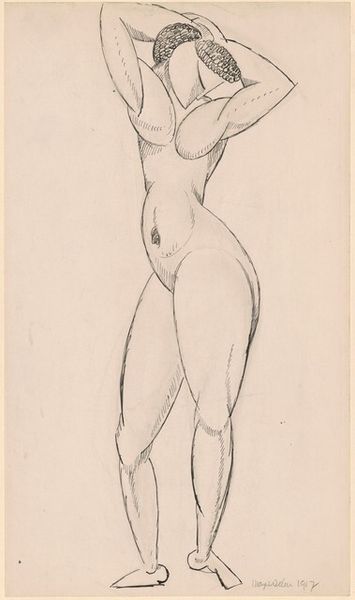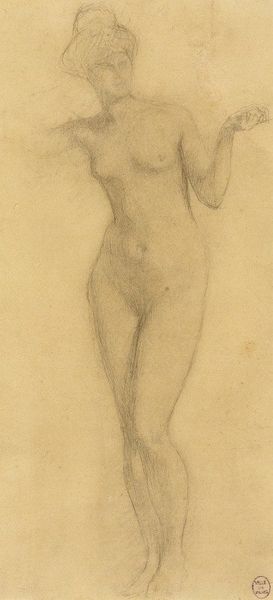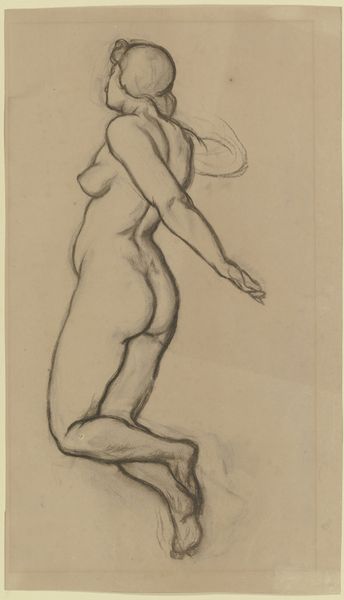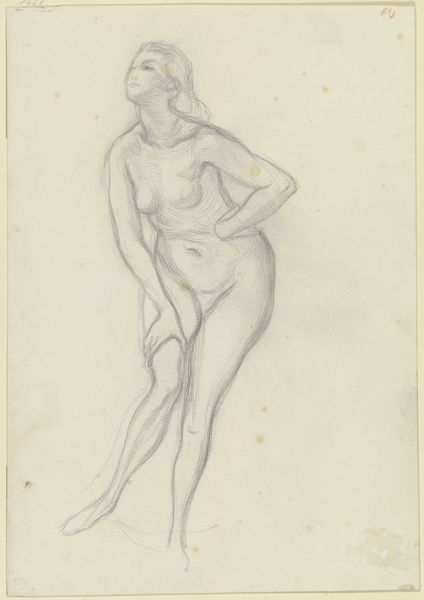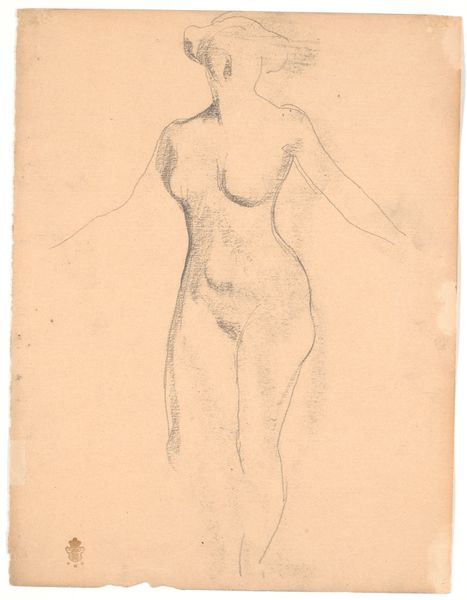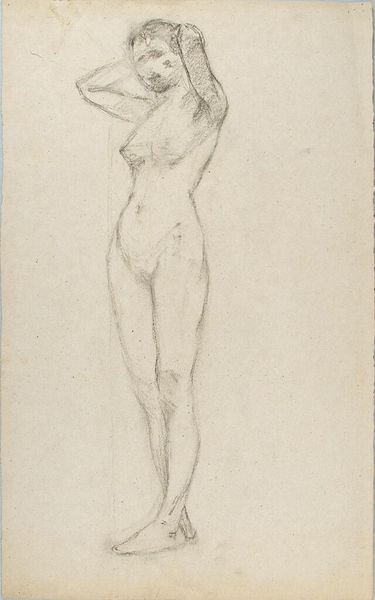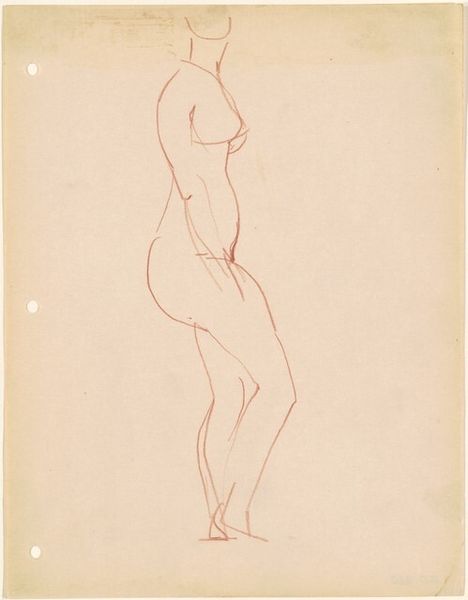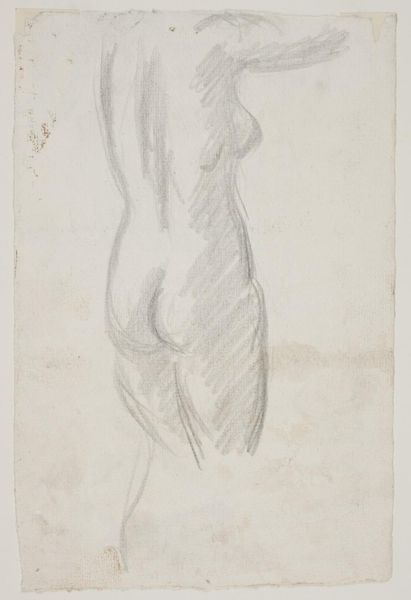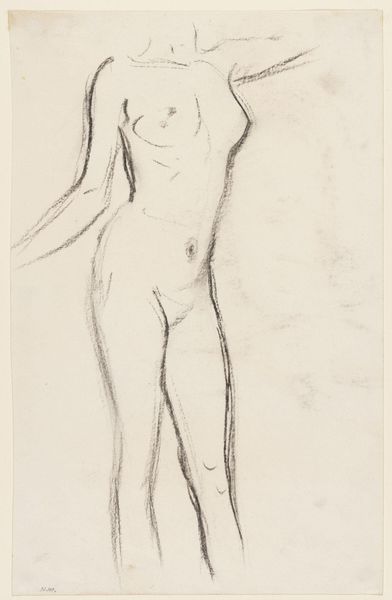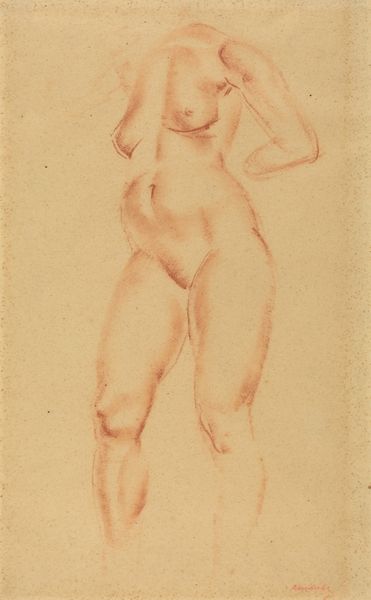
drawing, pencil
#
portrait
#
drawing
#
art-nouveau
#
pencil sketch
#
figuration
#
pencil drawing
#
intimism
#
pencil
#
symbolism
#
portrait drawing
#
pencil work
#
nude
Dimensions: height 305 mm, width 155 mm
Copyright: Rijks Museum: Open Domain
Editor: Here we have Richard Nicolaüs Roland Holst’s "Standing Nude Woman," a pencil drawing from 1900. It's delicate and vulnerable. What do you make of it? Curator: I see this work as part of a broader fin-de-siècle dialogue about the female body. It's 1900, and we are at a nexus of social change and artistic experimentation. The woman's pose – slightly averted gaze, hand raised – speaks to a self-awareness, maybe even a defensiveness. What is she shielding herself from? And, importantly, how does the male gaze operate, both in its creation by a male artist, and in its consumption? Editor: So you’re suggesting the pose isn’t just aesthetic but holds a deeper social meaning? Curator: Absolutely. Roland Holst was deeply engaged with socialist ideas. He admired artists with reformist ideals, and this work can be situated within that discourse. Consider how this drawing could be seen as subtly critiquing traditional, objectifying portrayals of women. Her very human vulnerability resists easy consumption. I'd like to also highlight that Holst actively participated in labor movements. How can his other commitments provide relevant insights when examining the body depicted in this pencil sketch? Editor: That's a completely different way to see it! I was just thinking about the style. Curator: Style always exists in a context, doesn’t it? It isn't purely aesthetic, but reflective of contemporary socio-political issues. Editor: I suppose it’s easy to get lost in the lines and miss that. It makes me wonder what other seemingly simple depictions hold a larger truth about what’s going on in the world. Curator: Precisely. By exploring these contexts, we expand our understanding of art's capacity for reflecting – and shaping – our world.
Comments
No comments
Be the first to comment and join the conversation on the ultimate creative platform.
